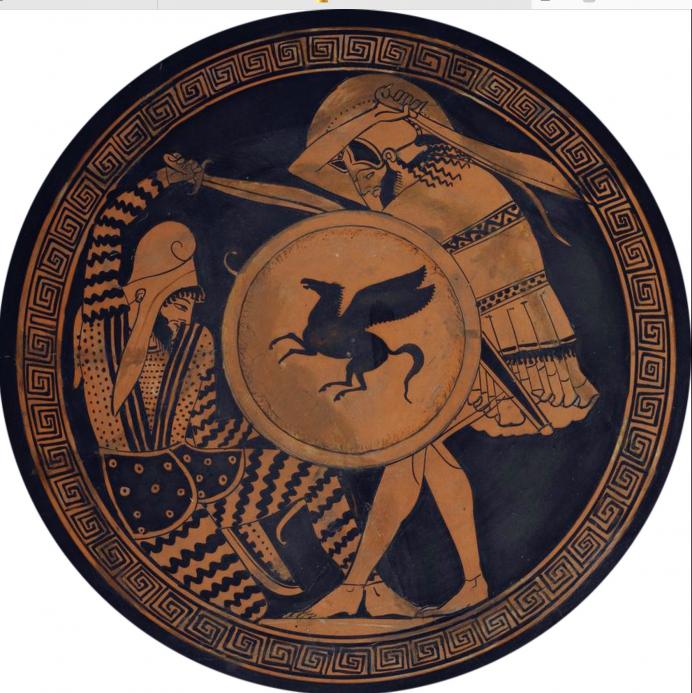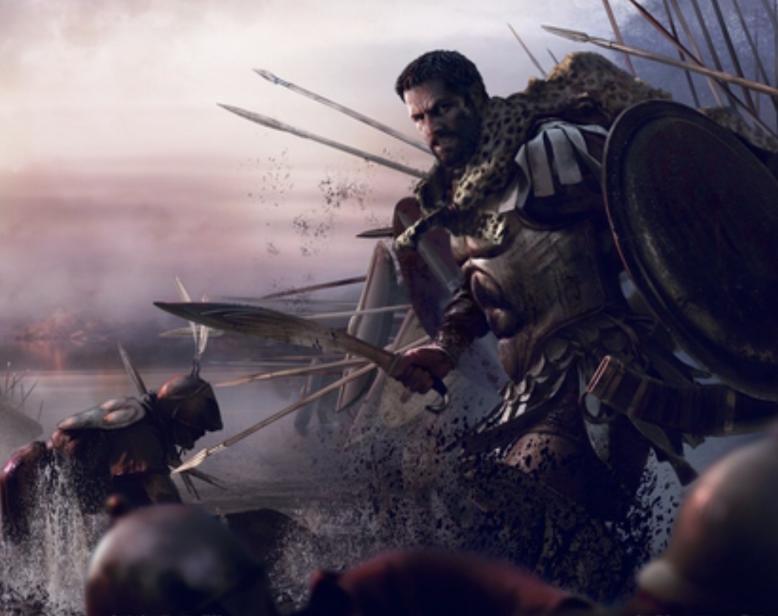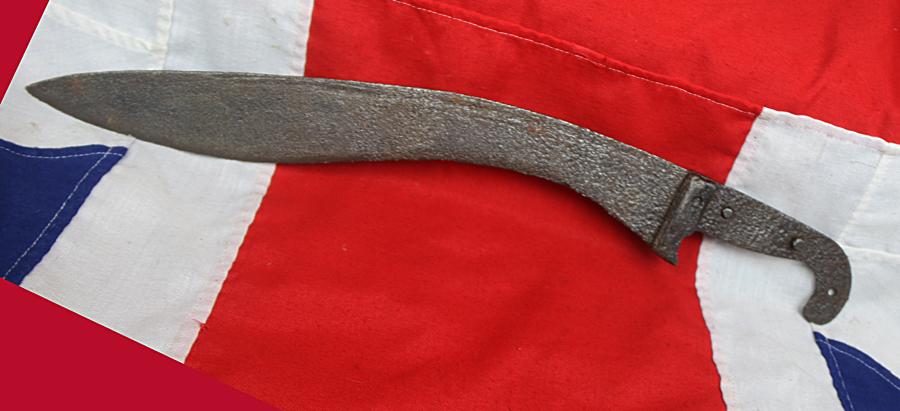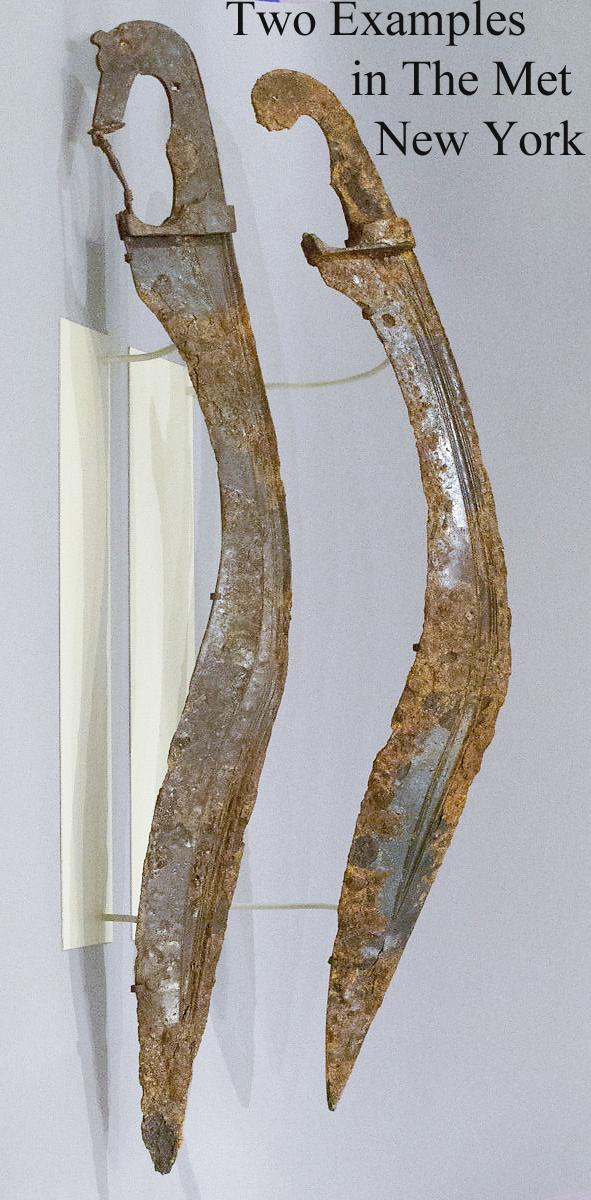An Incredibly Rare, Superb 3rd to 2nd Century B.C. Falcata {Machaira Sword} From the Invasion of Rome Era of the Punic Wars, by The Great General Hannibal. It Is Also The Very Same Design of Sword Used by Alexander The Great & His Generals 335 BC
A fabulous original historical artefact of ancient Romano Greek weaponry. Used by a high ranked warrior in the ancient Roman Republic period in Carthage. A design so efficient and effective in combat it was as popular in Ancient Rome as it was in the same period in Ancient Greece.
You simply do not often see such a rare and iconic original ancient sword, used by the most famed protagonists of the Carthaginian Wars, against the might of Rome, such as the Battle on Cannae, during the period of one of the greatest eras in classical history, let alone have the opportunity to own one.
Also a style of sword used by the Ancient Greeks in the time of Alexander the Great. The falcata or machaira is one of the most distinctive swords of classical history, and the machaira's design enabled a warrior to deliver a sharp blow from above, with its inverted curve and powerful blade it can be seen depicted in the earliest decoration of Hellenistic attic vases and early pottery from ancient Greece, paintings from great historical battles in early art work of the medieval period
Two similar examples are in the Metropolitan in New York see photo 10 in the gallery
In 219 B.C., Hannibal of Carthage led an attack on Saguntum, an independent city allied with Rome, which sparked the outbreak of the Second Punic War. He then marched his massive army across the Pyrenees and Alps into central Italy in what would be remembered as one of the most famous campaigns in history. After a string of victories, the most notable coming at Cannae in 216 B.C., Hannibal had gained a foothold in southern Italy, but declined to mount an attack on Rome itself. The Romans rebounded, however, driving the Carthaginians out of Spain and launching an invasion of North Africa. In 203 B.C., Hannibal abandoned the struggle in Italy to defend North Africa, and he suffered a devastating defeat at the hands of Publius Cornelius Scipio at Zama the following year. Though the treaty concluding the Second Punic War put an end to Carthage’s status as an imperial power, Hannibal continued to pursue his lifelong dream of destroying Rome up until his death in 183 B.C. This is simply a stunning and rare original Iberian single -edged Falcata of the 3rd-2nd century BC and later. A single-edged machaira sword of falcata type, with curved hilt of regular geometric shape, lateral iron guard (later addition); grooves on one side of the upper part of blade; three circular rivets of circular section which fastened the organic handle to the hilt. Weighing approx 630 grams , almost 22 inches long, and in nice condition for age.
A fine example piece, from the ancient Roman period over 2000 years old. Although this sword is now in an obvious ancient, and historical, russetted condition, with some elements lacking, every item made of iron from this era, such as the rarest of swords and daggers, even in the Royal Collection, are in this very same state of preservation.
See Quesada Sanz, F.,El armamento Ibérico, Madrid, 1991; Quesada Sanz, F., Arma y símbolo: la falcata Ibérica, Alicante, 1992; Quesada Sanz, F., ‘Patterns of interaction, Celtic and Iberian weapons in Iron Age Spain’ in Celtic connections, volume 2, papers from the Tenth International Congress of Celtic Studies, Edinburgh, 1995, Edinburgh, 2005; a similar specimen with a near identical hilt is the Iberian Falcata from Cerro Muriano (Córdoba, Spain) which is preserved in the Copper Museum of Córdoba (III-II century BC).
Since the 5th-4th century BC, the Iberian warriors armed themselves with round shields and single edged swords (falcatas) that were the Etruscan version of the Greek machaira. The latter type of sword was duly transformed into a completely new type, with a different size, shape and function, the falcata, already in use in the Iberian area by c. 490 BC. This type of curved, slashing, single-edged sword is generally accepted by the scholars as the 'national' weapon of the Iberians, and was commonly used in the Iberian Peninsula, worn by the warriors usually suspended on the left side in a scabbard to which was often attached a short knife. It was a terrifying cut-and-thrust sword, with an average blade length of 45cm. General Commander-in-Chief of the Carthaginian army, Hannibal was a Carthaginian general and statesman who commanded Carthage's main forces against the Roman Republic during the Second Punic War. He is widely considered one of the greatest military commanders in human history. His father, Hamilcar Barca, was a leading Carthaginian commander during the First Punic War. His younger brothers were Mago and Hasdrubal, and he was brother-in-law to Hasdrubal the Fair, who also commanded Carthaginian armies. Hannibal lived during a period of great tension in the western Mediterranean Basin, triggered by the emergence of the Roman Republic as a great power after it had established its supremacy over Italy. Although Rome had won the First Punic War, revanchism prevailed in Carthage, symbolised by the alleged pledge that Hannibal made to his father never to be a friend of Rome. The Second Punic War broke out in 218 BC after Hannibal's attack on Saguntum, an ally of Rome in Hispania. He then made his famous military exploit of carrying war to Italy by crossing the Alps with his North African war elephants. In his first few years in Italy, he won a succession of dramatic victories at the Trebia, Lake Trasimene, and Cannae. He distinguished himself for his ability to determine his and his opponent's respective strengths and weaknesses, and to plan battles accordingly. Hannibal's well-planned strategies allowed him to conquer several Italian cities allied to Rome. Hannibal occupied most of southern Italy for 15 years, but could not win a decisive victory, as the Romans led by Fabius Maximus avoided confrontation with him, instead waging a war of attrition. A counter-invasion of North Africa led by Scipio Africanus forced him to return to Carthage. Scipio eventually defeated Hannibal at the Battle of Zama, having previously driven Hannibal's brother Hasdrubal out of the Iberian Peninsula. As with all our items it comes complete with our certificate of authenticity.
Code: 23521
11275.00 GBP










